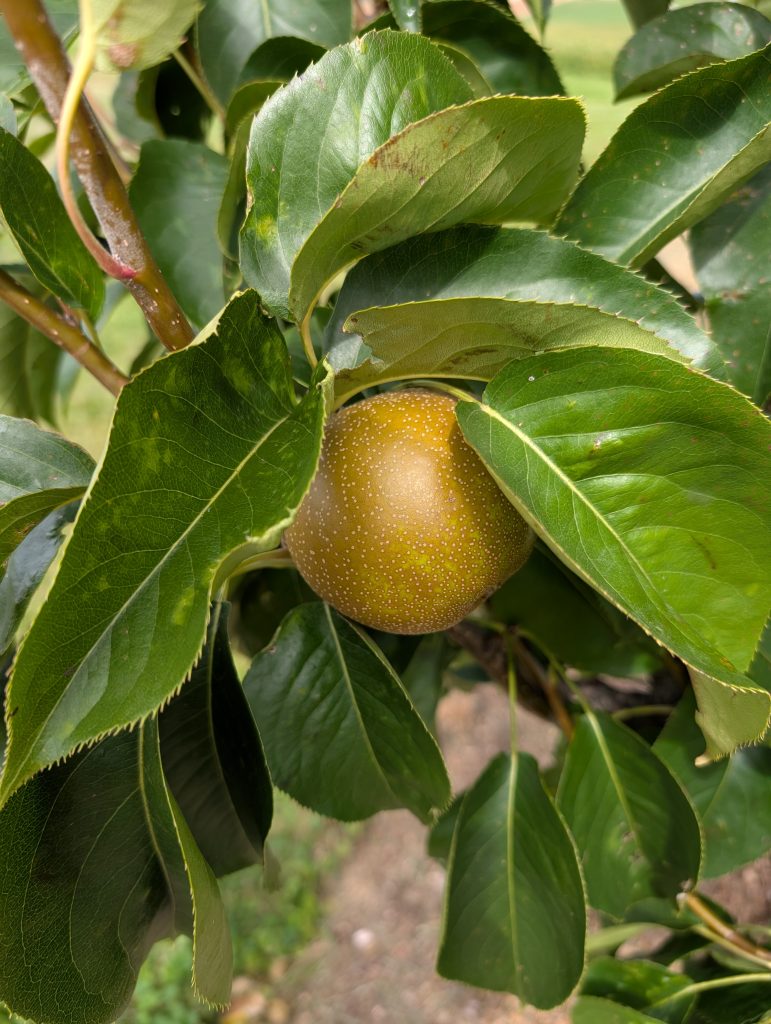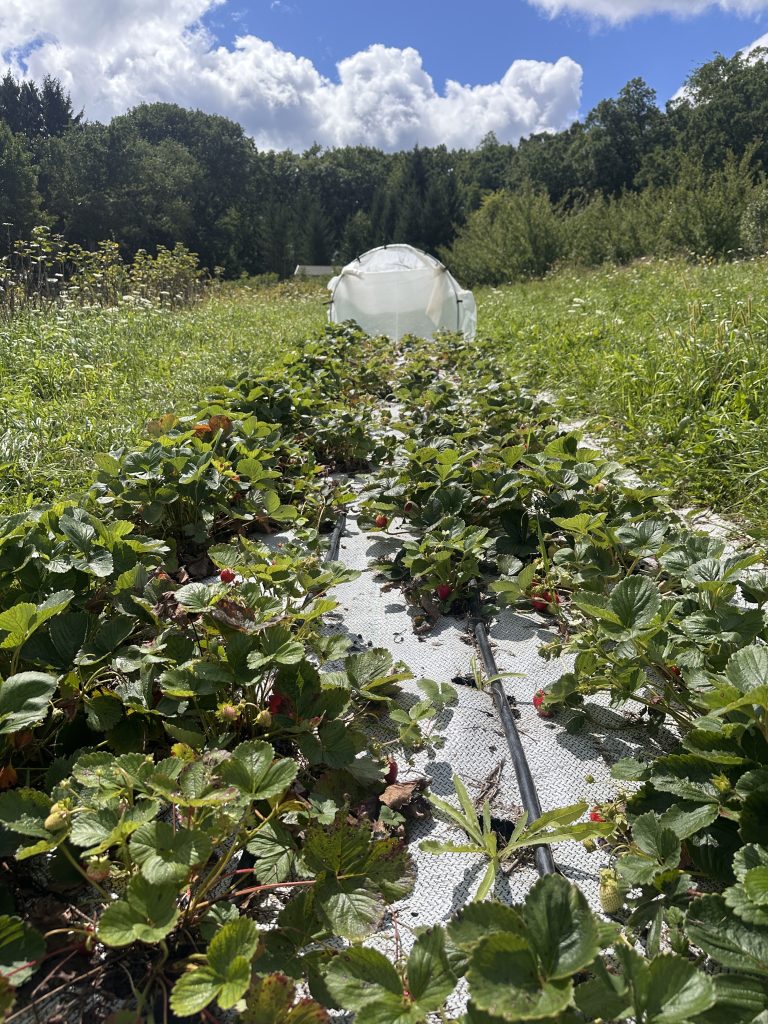Notes from the Field: A Growers Perspective – Ben Kraus Chat #11
Welcome back to our twelfth report of 2025 Notes from the Field! As a reminder, this year’s Notes from the Field will follow Ben Kraus with Gwenyn Hill Farm (Waukesha). The goal of this newsletter is to hear from the grower’s perspective and foster connection between fruit growers.
We’ll be focusing our discussions on phenology/fruit development and integrated pest management. This week, Ben wrapped up picking peaches and elderberries and shifted focus to apples and Asian pears. He is also picking apples from the abandoned orchard and will be pressing them for fresh cider. The day neutral strawberries are continuing to produce (more on that below). The table grapes are just hitting peak maturity and Ben will begin picking them soon. The cider and majority of fruit picked are available at Gwenyn Hill’s on-site farm stand. As for pest management, Ben is continuing to monitor for codling moth and apple maggot trap captures and keeping an eye out for any last-season diseases.
I chatted with Ben on Monday, August 25th to take a look at ripening fruit as we move through harvest. As a reminder, Gwenyn Hill has a 4-acre block of tree fruit and berries that sits along a north-facing slope, and ~150 table grape vines bordered by saskatoons and rhubarb across the road. Since my last visit, weather has been much drier and the temperature has begun to cool down slightly. According to NEWA, over the past ~two weeks (August 26-8), there was an average high temperature of 67.9℉, average low temperature of 46.5℉, and a total of 0.32” of precipitation near Gwenyn Hill (NEWA – Colgate, WI).


For disease management, Ben applied the last round of Potassium Bicarbonate and LifeGard WG (Bacillus mycoides isolate J) for tree fruit diseases like sooty blotch and flyspeck, bitter rot and black rot.
For insect management, Ben is continuing to monitor any further codling moth trap captures and applied the last round of Cyd-X (Cydia pomonella granulovirus) to target potential late-season impacts to Asian pears. Ben has observed a few stings in the asian pears, and is hoping this last round will help mitigate further fruit injury. As a reminder, codling moth larvae tunnel into and feed on the core of the fruit, often leaving a dark, “dusty”-appearing substance (frass) around the entry wound. Internal fruit feeding often leads to necrosis (fruit breakdown), making the fruit unmarketable. Sometimes, larvae may be unsuccessful in entering the fruit, leaving a small blemish, often referred to as a “sting”, in place of tunneling wounds. Other common insect injury observed on harvested fruit includes plum curculio oviposition damage, which often appears as a russeted or “scabbed” over “fan” shape.
As a reminder, this summer Ben has been trialling one and two-year old day neutral strawberries. Within each planting, he is also testing covered vs. uncovered plants. He is comparing the overall yield, and length of production (first flower to last harvest). Ben noticed the second year covered strawberries began producing flowers earlier than uncovered plants this spring, and have less sunburn injury. Up through the first big flush, both one and two year-old plantings performed quite similarly yield-wise. However, the two year old planting slowed down significantly after late July, dropping by nearly 50% compared to one-year old. Ben plans to leave the one and two-year old planting in for one more year, but may terminate plants after the first big flush next year. Last year, he was picking small quantities up until Thanksgiving thanks to the mild fall.
That’s all for this week’s Notes from the Field. Next week will be the last newsletter for the season, and Ben and I will chat more about his plans for fall. Good luck and best wishes to all WI Fruit Growers as we work our way through fall harvest!
This article series is NOT intended to be prescriptive for other orchards. It is simply an opportunity for our readership to hear from other growers about their experiences growing fruit crops in Wisconsin.
Growing the same crop does not always justify the same practices. Management decisions at your farm should be tailored to your operation and consider location, regional climate, disease and pest history, and your varieties.
The mention of a product is NOT an endorsement. Always follow the instructions on product labels and consult weather stations (ex. NEWA) in your area for current weather forecast and disease and pest prediction models.
This article was posted in Notes from the Field and tagged Ben Kraus, Josie Dillon, Notes from the Field.
